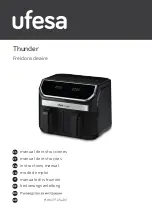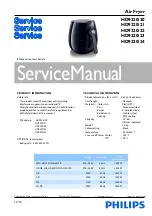
33
EN
Symptoms
Reason
Solution
Clothes take too long
to dry.
House fuse is blown,
circuit breaker has
tripped, or power
outage has occurred.
•
Reset circuit breaker or replace fuse. Do not
increase fuse capacity. If the problem is a
circuit overload, have it corrected by a qualified
electrician.
Appliance is
overloaded.
•
Divide extra large loads into smaller loads for
better drying performance and efficiency.
Appliance is
underloaded.
•
If you are drying a very small load, add a few
extra items to ensure proper tumbling action. If
the load is very small and you are using Sensor
Dry programmes, the electronic control cannot
properly sense the dryness of the load and may
shut off too soon. Use Timed Drying programmes
or add some extra wet clothes to the load.
Drying time is not
consistent.
Heat settings, load
size, or dampness
of clothing is not
consistent.
•
The drying time for a load will vary depending
on the type of heat used (electric), the size of
the load, the type of fabrics, the wetness of the
clothes, and lint filter. Even an unbalanced load in
the appliance can cause poor spinning, resulting
in wetter clothes which will take longer to dry.
Greasy or dirty spots
are left on clothes.
Fabric softener is used
incorrectly.
•
When washing laundry that is to be dried in
the appliance, use the correct amount of fabric
softener as recommended by the manufacturer of
the fabric softener.
Clean and dirty
clothes are being dried
together.
•
Use the appliance to dry only clean items. Soil
from dirty clothes can transfer to the clean
clothes in the same or later loads.
Clothes were not
properly cleaned
or rinsed before
being placed in the
appliance.
•
Stains on dried clothes could be stains that were
not removed during the washing process. Make
sure that clothes are being completely cleaned
or rinsed according to the instructions for your
washing machine and detergent. Some difficult
soils may require pre-treating prior to washing.
Содержание RC90U2AV2E
Страница 38: ...Memo ...
Страница 39: ... مذكرة ...
















































